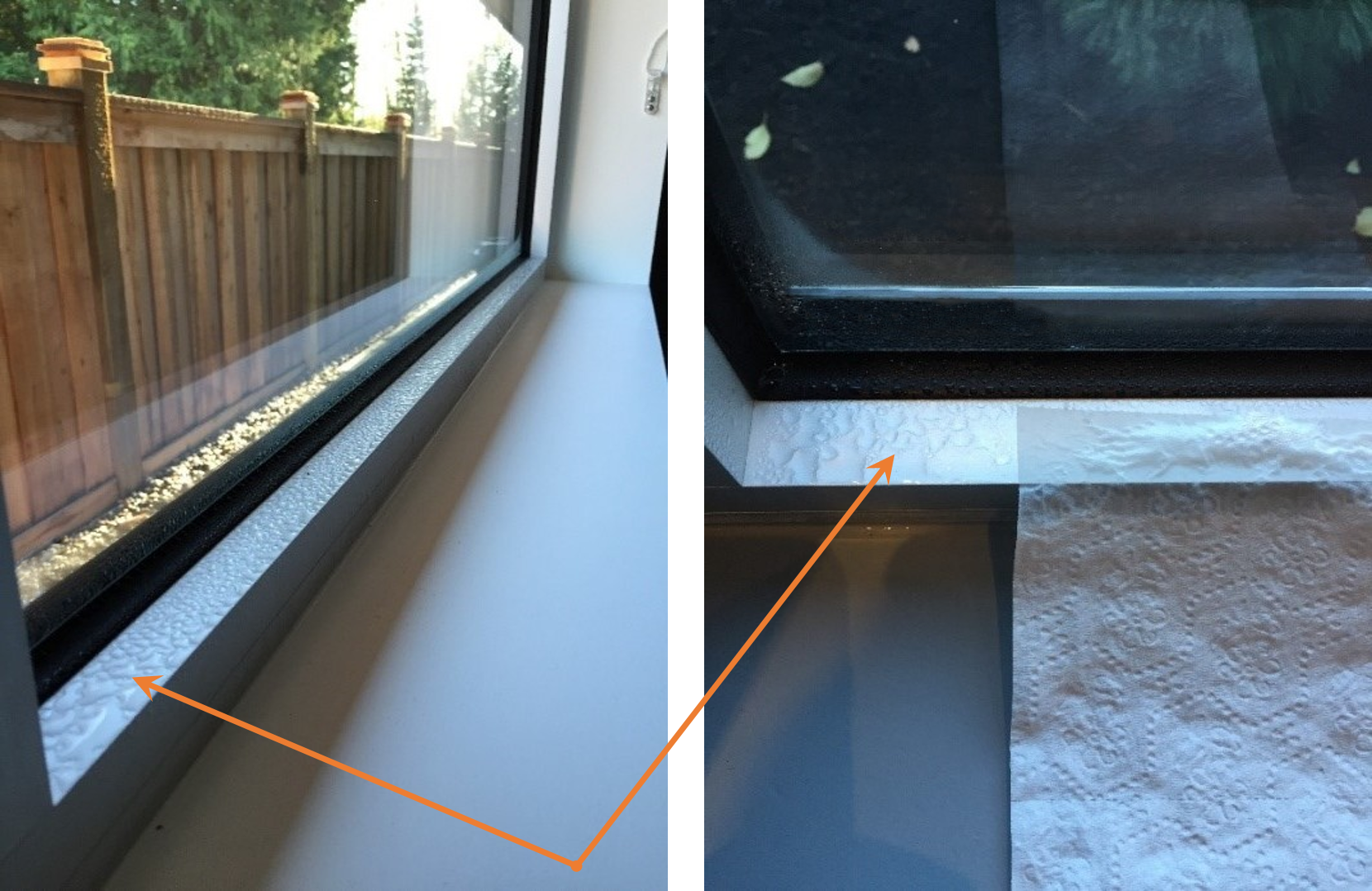Condensation on the inside face of windows is problematic: it compromises the view; dealing with dripping water is a hassle for the occupants; and, most importantly, over the long term it can pose the risk of moisture damage to interior finishes and in some instances, to the wall structural framing.
The window industry has come a long way in improving the condensation resistance of windows by increasing the thermal performance of three main components of a window: the glazing section, the spacer bar, and the window frame. In addition, various tools such as thermal modelling software and physical testing are available to verify whether or not a certain window meets the required condensation resistance. Nonetheless, in spite of the improvements in modern windows, and modelling and test results that suggest condensation is not likely to occur under certain assumed environmental conditions, there have been instances where recently installed, building code-compliant windows have experienced condensation. Below photos show examples of condensation on a double glazed thermally broken aluminum framed window, installed in a new residential Vancouver home in 2014.

When it comes to addressing window condensation, the first course of remedial action generally undertaken by the industry focuses on the window itself. Our experience has shown that this first step, although necessary, is not sufficient in addressing all the associated risks leading to condensation. In other words, when it comes to addressing condensation, a holistic approach that examines all the contributing factors needs to be implemented.
In general, condensation on the interior face of a window can be related to one, or a combination of, the following factors:
1. Low thermal performance of windows
2. Window and wall insulation misalignment
3. Window attachment method
4. High interior Relative Humidity (RH)
5. Low Emissivity coating on the glass surface facing the inside of the building
6. Interior blinds
7. Insufficient exposure of windows to heat flow
In the upcoming four blog posts, we will discuss the above factors, how they contribute to the risk of condensation, and what measures we can take to address this risk.
